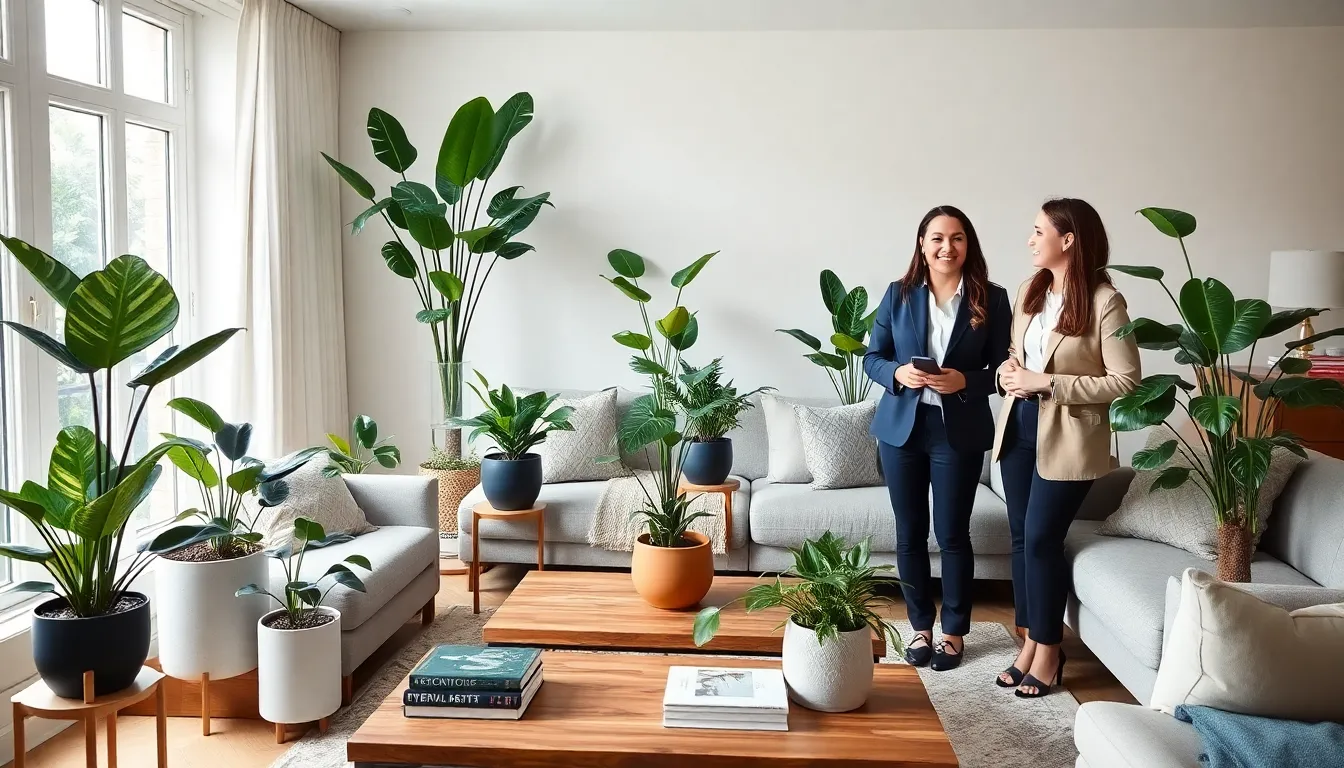When it comes to decorating homes, the charm of plants is undeniable. But have you ever ventured into the world of expensive house plants? They don’t just serve as pretty decor: they can bring a touch of elegance and a whole lot of personality. You might think they’re just fancy ferns or lofty succulents meant for high rollers and plant connoisseurs, but these beauties come with stories, rarity, and a dash of luxurious allure. So, if you want to impress your friends or simply elevate your living space, let’s dig into why these leafy wonders are worth your investment, with a few laughs along the way.
Table of Contents
ToggleThe Allure of Expensive House Plants

Expensive house plants are more than just foliage: they’re status symbols in the botanical world. People don’t just want to own a plant: they crave the experience of nurturing something that stands out. Imagine walking into a room filled with lush greenery, only to be greeted by the sight of a rare Monstera Albo or a striking variegated ZZ plant. The beauty of these plants is mesmerizing, and they often inspire envy from anyone who lays eyes on them. The allure comes from their exotic appearance and the prestige of owning something few others have. Nothing says ‘I’ve arrived’ quite like a well-cared-for, expensive plant.
Besides, there’s a vibrant community surrounding these plants, from Instagram influencers showcasing their green thumbs to local plant swaps where enthusiasts gather to share tips and, of course, plant cuttings. This community offers knowledge and inspiration to budding collectors eager to embrace the joys, and yes, the sometimes pricey, commitment of caring for high-end house plants.
Reasons for Their High Prices
The price tag on expensive house plants can often leave plant lovers scratching their heads. So, why are some plants so pricey? It often boils down to factors such as rarity, care demands, and cultivation methods. Many high-end plants are hard to find because they are rarer in the wild or require specific growing conditions, making them attractive to collectors.
Also, plants like the Philodendron Pink Princess or a rare Orchid can take years to propagate, leading to a limited supply. Labor-intensive agriculture and a careful selection process during breeding can also contribute to the high costs. A unique trait like variegation, which means those striking splashes of white or yellow in a green leaf, demands meticulous attention, enhancing both the aesthetic appeal and its price.
Finally, the growing trend of plant ownership has surged over recent years, often leading to inflated prices as demand outstrips supply. So, when considering an investment in house plants, one must take these aspects into account.
“Its not just a plant: it’s a statement. Knowing that can help justify the splurge, right?
Top 10 Expensive House Plants to Consider
If you’re ready to take the plunge into the world of expensive house plants, here is a curated list of ten that you should keep an eye on:
- Monstera Deliciosa Variegata – This beauty can fetch anywhere from $300 to $1,000, depending on its variegation.
- Philodendron Pink Princess – Known for its pink and green leaves, these go for around $200.
- Fiddle Leaf Fig – A staple in upscale homes, it can cost upward of $400 for a large specimen.
- Cadieux’s Rare Orchid – Often priced at $200 or more, this plant attracts collectors.
- Variegated ZZ Plant – Unique and easy to care for, expect to spend around $100.
- Alocasia Azlanii – This beauty can reach up to $200, prized for its striking color.
- Hoya Kerrii – Often seen as a gift plant, it typically costs about $50.
- String of Hearts – With prices from $50 to $150 based on maturity, this trailing plant is very popular.
- Japanese Maple Bonsai – A living art piece, it usually starts at $100 and can skyrocket for rarer specimens.
- Raven ZZ Plant – This deep green plant costs about $80 and is perfect for lower light conditions.
Each brings its own charm to a home, making them worthy investments for your plant collection.
Caring for High-Value House Plants
Investing in high-value house plants means that proper care is paramount. Each plant has distinct needs, and following care tips can ensure longevity and beauty.
- Light Requirements: Many expensive plants thrive in bright, indirect sunlight. Avoid direct sunlight, as it can scorch the leaves.
- Watering Tips: A good rule of thumb is to check the top inch of soil. If it’s dry, it’s time to water. Overwatering can lead to root rot, something no plant owner wants to face.
- Humidity Levels: Many tropical varieties love humidity. Using a humidifier or pebble trays can help, especially in drier climates.
- Fertilization: During the growing season (spring and summer), a balanced fertilizer can help them flourish. Just remember, less is often more.
Collecting and Investing in Rare Plants
Collecting rare house plants can feel akin to treasure hunting. The thrill of tracking down that elusive specimen, especially one that has shown its worth in beauty and value, can be intoxicating. When embarking on this journey, it’s essential to research thoroughly. Knowledge about each plant can prevent undue risk.
Purchasing from reputable nurseries or shows where enthusiasts gather is advisable. These places often showcase prized plants and knowledgeable sellers who understand the market. Also, leverage online communities where collectors swap advice, tips, and even plant cuttings.
This passion can lead to a rewarding investment. Many collectors have seen substantial value appreciation as they keep their prized plants flourishing. But, as with any investment, staying informed about market trends is crucial.
Sustainable Practices for Plant Purchase
Being a plant lover doesn’t mean one has to compromise on sustainability. Several ways exist to ensure that your plant collection remains environmentally conscious. One can prioritize buying from local growers who emphasize ethical propagation practices. Local nurseries often ensure that plants are well taken care of and are free from pesticides.
Choose to support stores that practice regenerative agriculture, emphasizing care for the soil and ecosystem. Also, consider trading plants with friends or joining plant swap events, which not only fosters community but also minimizes environmental impact by reducing shipping and packaging.



